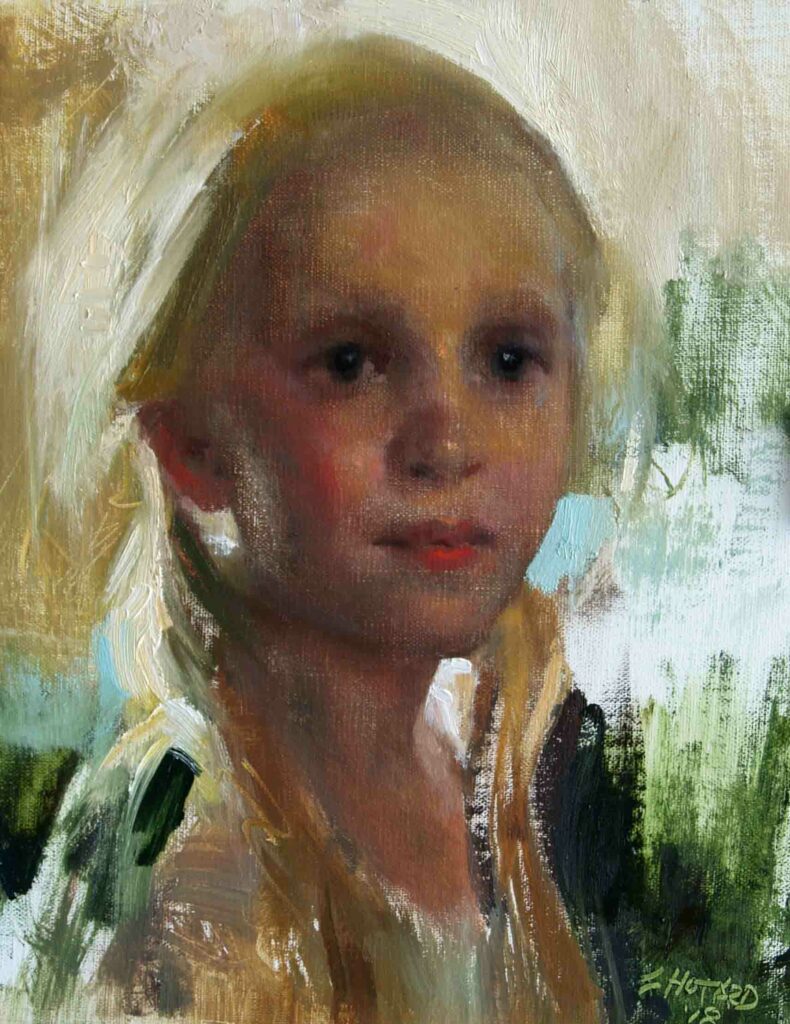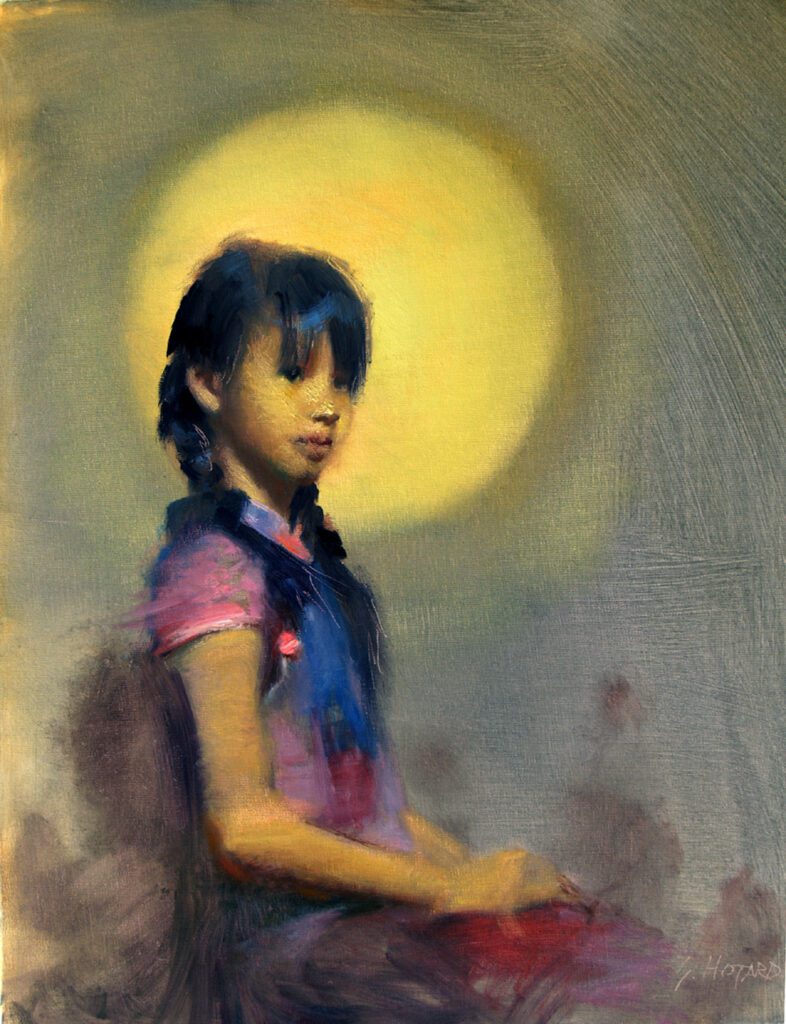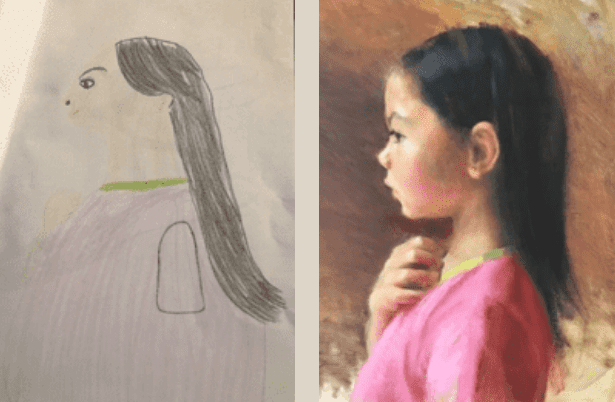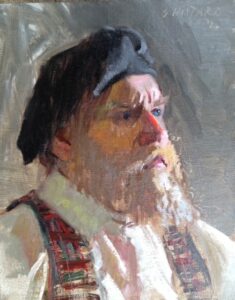If you are not confident in your color mixing ability, ask yourself if you have too many colors on your palette. If every time you have taken a workshop from a different instructor you have purchased their recommended paint colors, then you might be both confused and broke! It means you have not found your palette yet. It’s time to find your own palette.
Do you have too many colors on your palette? Try editing your palette. Get comfortable with your palette and paint a lot. Know what your selected colors will do. One way to get more competent and confident in your mixing ability is to experiment with a limited palette. Each one of these limited palettes will help you with harmonious color.
Experiment by using a limited palette.
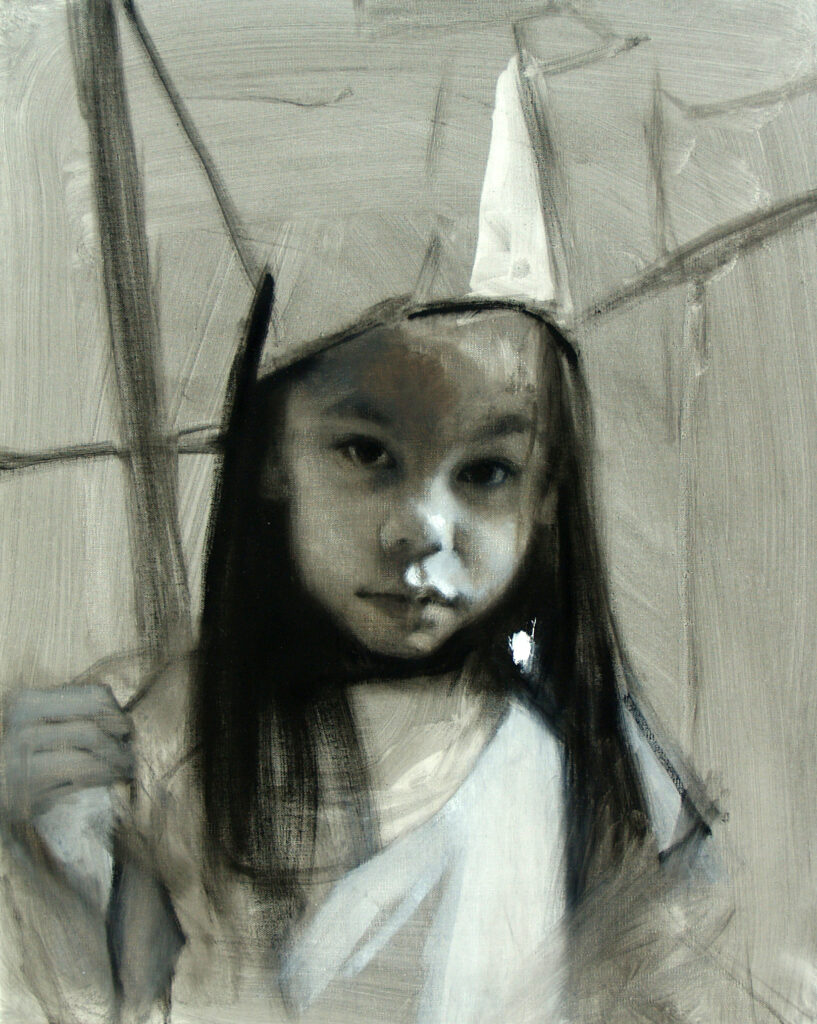
20”x16” – oil on linen – Extremely limited palette

8”x10” – Oil on linen panel – Very limited palette
Try these very limited palettes:
1. Extremely limited palette: Ivory black, titanium white. Using these two colors lets you concentrate on your design, drawing, values, and paint quality.
2. Very limited palette: Ivory black, burnt sienna, yellow ochre, titanium white. With these four colors, you can make beautiful color. Ivory black with a little white added to it makes a blue. Yellow ochre with black creates a green. This is a nice palette to use for still lifes and portraits.
3. Culinary palate (ha, ha!): ketchup, mustard, salt, pepper: Ketchup is alizarin crimson, burnt sienna, cadmium red (used alone or mixed with other of the reds). Mustard is yellow ochre and/or cadmium yellow. Salt is titanium white. Pepper is ivory black. You may use burnt umber and or burnt sienna for drawing.
4. My Chosen Palette: Ivory black, burnt umber, chromium oxide green, viridian, ultramarine blue, alizarin crimson, burnt sienna, yellow ochre, cadmium red, cadmium orange, cadmium yellow, cadmium yellow light, titanium white. I can paint just about everything with my palette. I am very familiar with how the colors mix and I make sure to buy the same brand of paint. I do extend my palette when I need different colors for flowers or sky etc. But on the whole, I have found my palette.
Whichever palette you have chosen, always place your paint on your palette in the same spot (like piano keys), that way you can reach for your paint automatically. Exercise your muscle memory. Practice mixing and painting so much that it becomes a part of you. This will help you find your palette.
In summary, to familiarize yourself with color, start by limiting your colors. Add colors over time. Know where they are on your palette and know your paint brand.
Go find your palette!
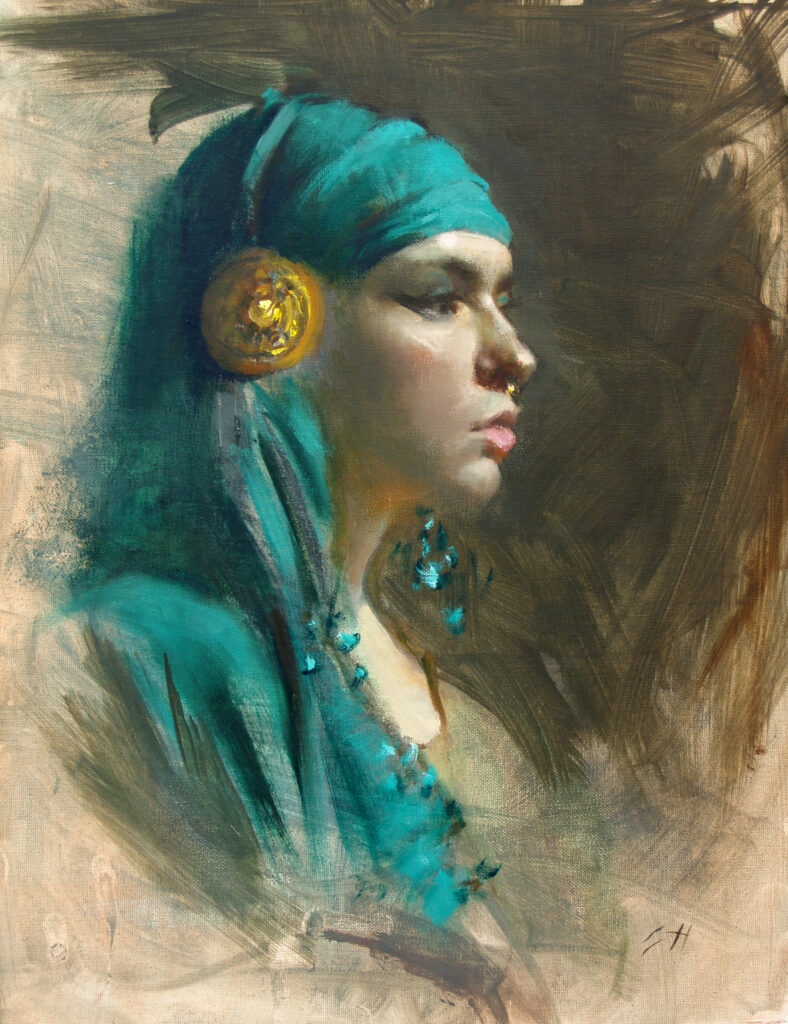
14”x11” – Oil on linen panel – My chosen palette with added phthalo green
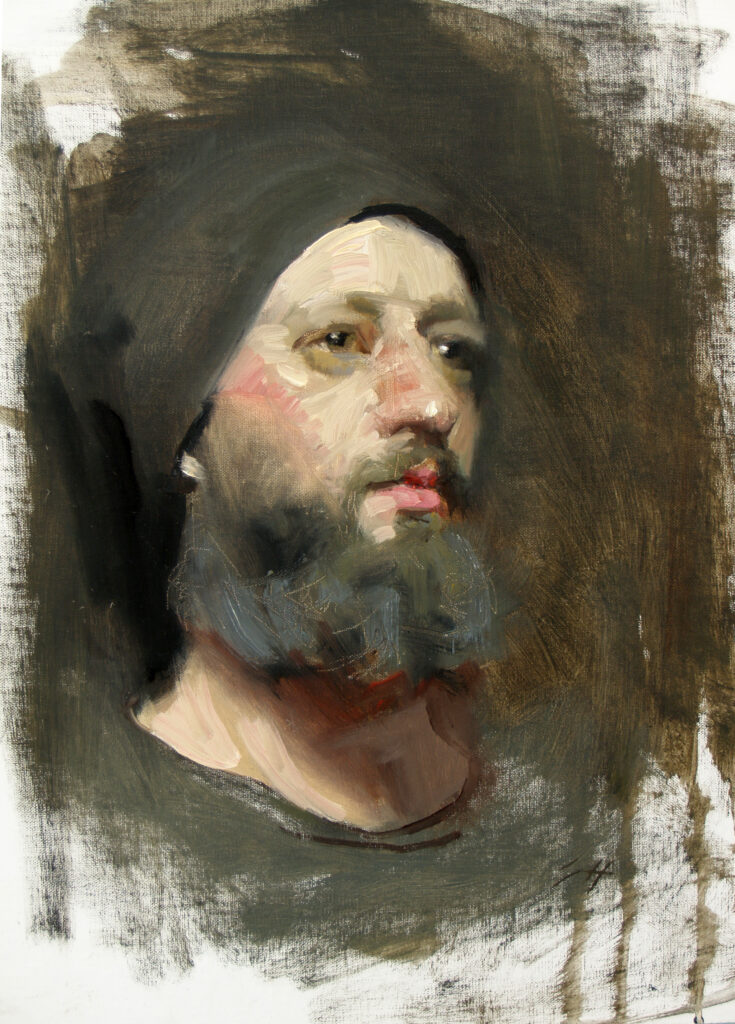
16”x12” – Oil on linen panel – My chosen palette

20”x16” – Oil on panel – My chosen palette

11”x14” – Oil on linen panel – My chosen palette



